CHURCHYARD, Thomas
Thomas Churchyard was born at the butcher's shop, opposite the 'Horse and Groom' in the village of Melton, Suffolk, on 22 January 1798, only child of Jonathan Churchyard (1765–19 November 1825), a cattle dealer, grazier, & butcher, and his wife Anne White (1775-1834), daughter of Thomas White, a wealthy grocer & draper of Peasenhall, Suffolk. In 1808, Thomas entered Dedham grammar school, Essex, living in the headmaster’s house as a boarder, studying Classics, French and English poets, philosophy, religious speculation, and natural history. Leaving school in 1815, and in the following year was articled to Crabbe & Cross, solicitors at Halesworth, Suffolk, leaving for London in 1820 to complete his final year of articles and being admitted to the Roll as an attorney. During his time at Halesworth, Thomas learned more than law, he travelled to Norwich where he would have seen works by father and son John Crome (1 December 1794–15 September 1842) and John Berney Crome (1 December 1794–15 September 1842), and he began to copy their paintings developing his own style of natural landscapes. He illustrated a book of botanical subjects with William Jackson Hooker (6 July 1785–12 August 1865), who was later the Director of Kew Gardens. He had already begun collecting the works of his favourite artists, an addiction which never left him even when he later fell on demanding times. By 1822 he was established as an attorney at Woodbridge and in January 1825 Churchyard married Harriet Hailes (8 September 1797–5 December 1866), daughter of Lieut George Hailes R.N., of Henley, near Ipswich and his wife, Susan née Harris of Ramsey, Essex. The couple rented their first home at 29 Well Street, Woodbridge. A pair of portraits in Christchurch Mansion Museum, Ipswich, shows Harriet as a charming girl with blue eyes and a rosebud mouth; her husband appears as a curly-haired young blade posing in a panelled study, with a quill in his hand and a grandly framed oil painting already over the fireplace. Their first child, Thomas, was born on 16 March 1825 and over the next fifteen years they had seven daughters Ellen, Emma, Laura, Anna, Elizabeth (Bessie), Harriett and Catherine (Kate), as well as a second son Charles in 1841, another son died in infancy. In 1832, the family moved to The Beeches, Melton, though Churchyard himself spent the following two years in London, and about 1843 they moved to Cumberland Street, Woodbridge. Churchyard's father died in November 1825, leaving him richer by a half-share in his parents' estate. At the age of twenty-seven in 1825, Churchyard could look forward to an unruffled career, secure in his profession, in his financial expectations, and in his belief in himself as an artist. In 1829, Churchyard exhibited four 'Study from Nature' pictures at the Norwich Society of Artists, being elected an honorary member, and the following year at the Society Of British Artists in Suffolk Street, London and at the Royal Academy and on the strength of his public appearances as a landscape painter, determined that his true vocation lay not in the law, but in art. In 1832, he impulsively decided to sell up in Woodbridge to sell his books and some of his collection of paintings which were by Gainsborough, Crome and George Morland, housed his wife and five young children at Melton and, with his old friend George James Rowe, made for London where Churchyard set up a studio at 7 Stamford Grove, Stamford Hill, Upper Clapton from where he submitted four works at the Royal Society of British Artists in 1833. Realistically however, there was little chance that a country lawyer-cum-artist would succeed in a profession in which John Constable himself, supported by his wife's handsome legacy, found such hard going, Perry Nursey was in financial trouble and John Berney Crome (1794–1842) went bankrupt. Churchyard's own dash for fame quickly faltered, firstly his confidence was shaken by his failure in 1832 to get any of his pictures into the Royal Academy exhibition and within eighteen months of setting himself up as an artist in London, he was back with the family at The Beeches, Melton and resumed his legal practice opening a makeshift office in Quay Street, Woodbridge and taking newly qualified Edwin Church Everitt (1808-1868) as his partner. Having more success as a solicitor and in 1834, together with his family, moved to a part of Marsden House, Cumberland Street, Woodbridge. His London experience however had a long-term effect, for it was to be eighteen years before he contributed again to a public exhibition, when he exhibited at the Suffolk Fine Arts Association at The New Lecture Hall at the Ipswich Mechanics' Institution in August 1850 several oil paintings including 'Dead Partridge', 'Dead Pheasant', 'Sketch of a Hollyhock', 'A Woodland Scene', 'Scene at Melton' and four 'Sketches from Nature' and watercolours 'Heath Scene', two further entitled 'Sketch from Nature', 'Heath Scene' and 'River Scene'. His easy-going belief in an impending inheritance was soon to be shaken, his great-uncle James died in the summer of 1858, his house, Byng Hall at Pettistree, and his farms turned out to be so heavily mortgaged as to be nearly worthless. This financial setback caused the family to leave Marsden House and move back to Melton for a year or so, to retrench, but by 1856 they returned to Woodbridge, to Hamblin House a little further down Cumberland Street and almost opposite Marsden House. Churchyard was obliged to surrender several treasured artworks he had pledged against loans and to put his life-assurance policy up for sale and, for his daughters' behalf, began making provision for the stock of his own paintings to pass to them. He set about dividing them into seven equal lots, placing each sister's name on the back, against the day when their true worth, he assured them, would be recognised. There would be no provision for son Thomas (1825-1896), who had sailed off for a new life in Canada, losing his young wife and two children in a shipwreck off the coast of Newfoundland and ending up in New Zealand, nor for son Charlie, hopelessly spoiled by his sisters and doomed to end up in an alms house in his old age. Thomas Churchyard died of heart failure at Woodbridge on 19 August 1865 and buried in Melton Old Church. He died insolvent but with the remnants of his art collection still hanging on his walls. In March 1866 his effects were auctioned when Edward Packard purchased Gainsborough's 'Shepherd's Boy and Dogs' for 28 guineas; Bassano's 'The Vintage' 20 guineas, Morland's 'Horse and Sheep' 17 guineas, Old Crome 'Cottage at Heigham' 29 guineas, 'Study of Horses' 6 guineas; and in all his twenty-three oils by Crome fetched £650, his four John Constable's £120, and his three Wilson's £60. One of his own large oils, of Melton Meadows, was knocked down for £7 15s. Hundreds of his works, however, and more than a score of albums passed into his daughters' keeping, representing about 90% of his output. As none of them married, the works were not widely dispersed until the last of his daughters, Harriet died, whereupon Charles bundled his surviving works in with his sisters’ works and a total of over 4,000 items were sold in Arnott and Everett's Woodbridge salesroom on 30 April 1927. People purchasing folders full of drawings and paintings naturally judged them as very variable in quality. Some were so good that they were mistaken for works by Constable, Cotman or Crome. But some so weak that collectors pronounced Thomas too amateurish to merit real attention. The whole sale, including the furniture and china realised slightly more than £600. His work is now to be found in many major public and private collections including: the Tate Gallery, London; the British Museum; the Victoria & Albert Museum Library; the Ashmolean, Oxford; the Fitzwilliam, Cambridge; Norwich Castle Museums and Art Galleries; Christchurch Mansion, Ipswich; The Alexander Turnbull Library, New Zealand; Dunedin Art Gallery, New Zealand; the Huntington Art Gallery, California; The Putnam Museum, Iowa.
Royal Academy Exhibits
from Woodbridge, Suffolk
1831 529 A Drawing from Nature
837 A Drawing from Nature
Works by This Artist
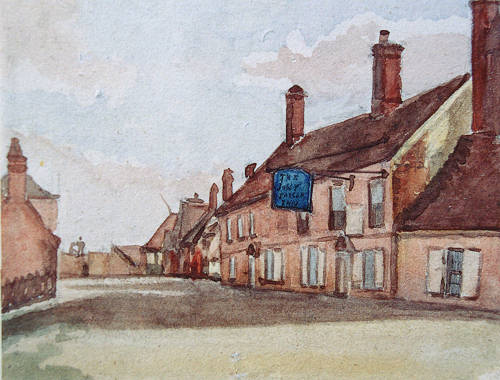
|
Jolly Sailor OrfordWatercolour
|
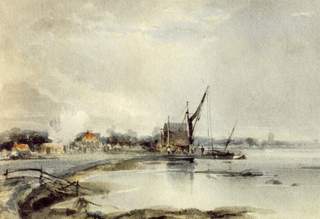
|
Lime Kiln at Melton Dock, River DebenWatercolour
|
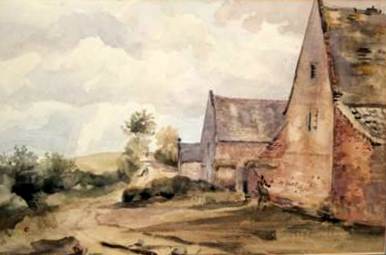
|
Barns at Seckford Hall, WoodbridgeWatercolour
|
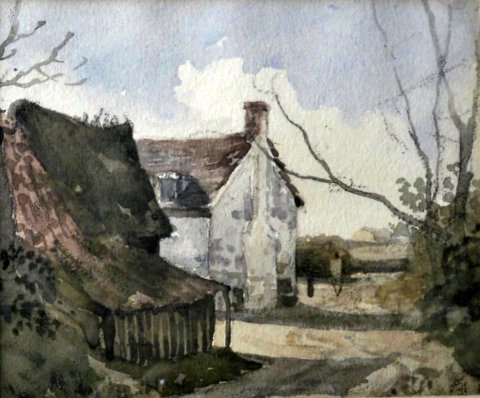
|
Lane and Cottage at Campsea Ashe in SuffolkWatercolour
|
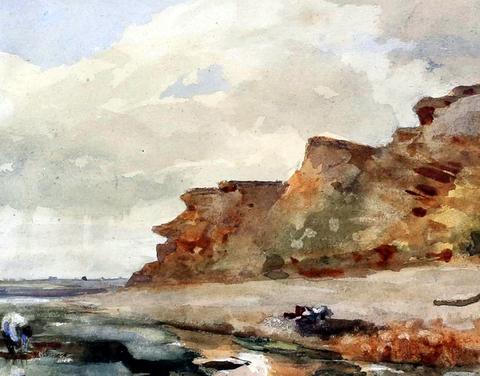
|
Bawdsey Cliffs, SuffolkWatercolour
|
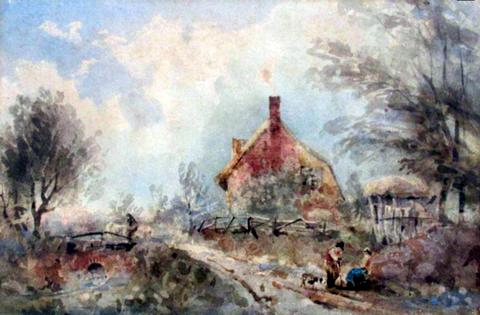
|
Rural Scene with Cottage and FiguresWatercolour
|
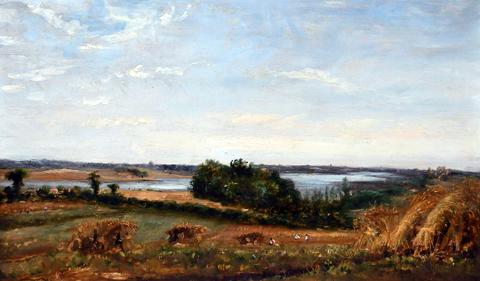
|
The River Deben down the River from Methersgate opposite Kyson Point, SuffolkOil on panel
|
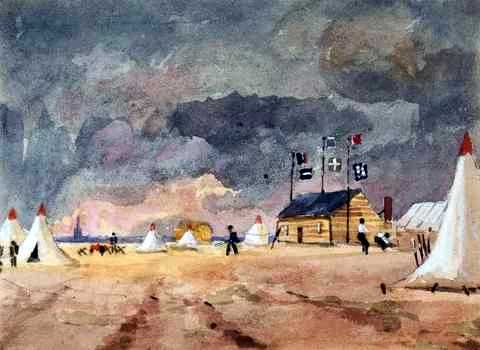
|
Landguard Fort, thunderstorm approachingWatercolour
|
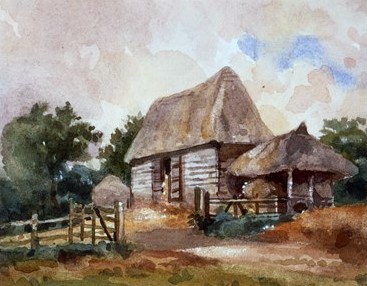
|
Barn at Great BealingsWatercolour
|
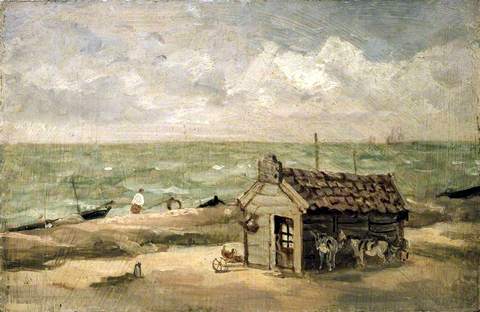
|
A Fisherman's Hut by the SeaOil on board
|
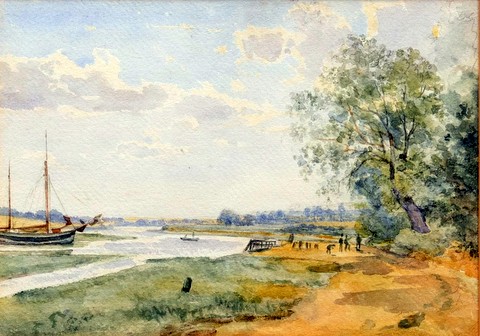
|
View of the Deben at KysonWatercolour
|